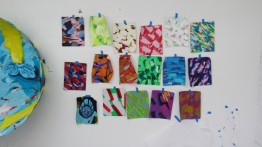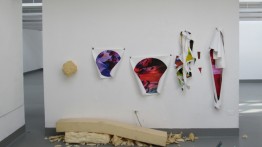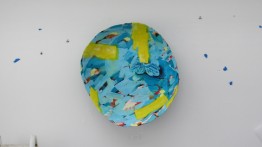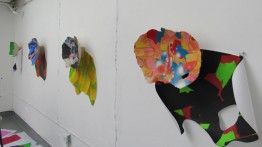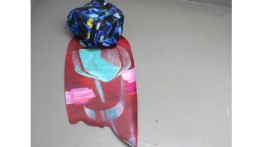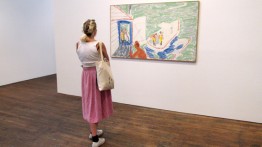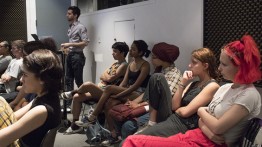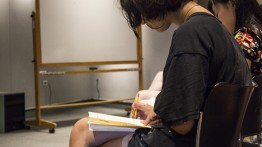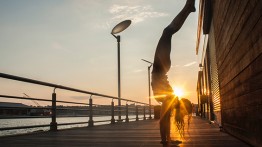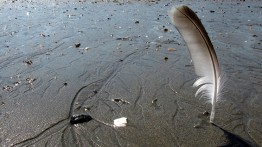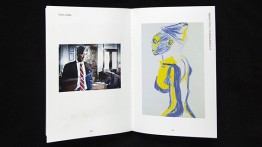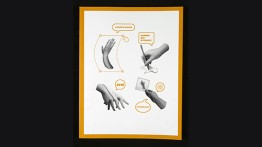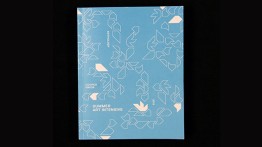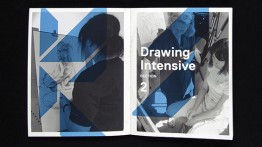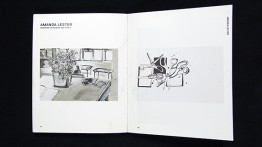Summer Art Intensive Blog
Rachel Gorchov Artist-in-Residence 2018
POSTED ON: April 2, 2019
The painting studios at Cooper Union are my happy place. I spent as much of June of 2018 as I possibly could making paintings in my sun-lit studio in the middle of the village, on a high floor in Cooper Square. It’s a real gift to make art in a studio that was designed to be an artist studio, a luxury that artists working in New York rarely, if ever have. It’s this experience that makes the Artist-In-Residence program at Cooper Union unique, and not something I realized I missed until I got there.
I surprised myself by the amount of work I was able to produce, insights I gained about my work, studio visits I was able to arrange. Again, it comes back to the space. There is something about that space that encourages creative contemplation and production. My palette changed, I distilled my subject matter, and personal logic that drives my subject matter.
I worked alongside four other residents, all of us with our own dedicated studio space. Each of us had different goals for our time at Cooper Union. As someone who teaches, the academic year is very full. My personal goals included simply prioritizing studio work above all else. An artist duo from Los Angeles, Theresa Sterner and Zach Trow, used their time to conduct field research and begin a large collaborative project. Sara Murphy completed an ambitious series of paintings, and Rachelle Dang used the momentum she had gained after recently finishing her MFA to realize a large-scale installation.
Throughout the residency, the Summer Art Intensive students and faculty would respectfully visit my studio. In addition to the community discourse I had with the other residents, the conversations that emerged in these visits with high school students encouraged me to go back in time and remember where I was at their age, what led me to this point in my life, how I became and continue to work as an artist.
The residency culminated in presentations by students and the resident artists, then an exhibition. As an artist who primarily works in a home studio and as an educator who rarely gets to be a fly on the wall in others’ classrooms, this opportunity to have a window into others’ studios, teaching practices, and student experiences was quite gratifying. I’d jump at the chance to attend this residency again.
What kind of artist do you want to be? Evan Bellantone
POSTED ON: March 22, 2019
Contemporary Art Issues is one of these big, broad topics that can feel challenging to pinpoint because of the sheer scale of the art on view in the city. This vastness can also be one of the great pleasures of seeing art in New York. One could do worse than to only visit the most famous and visible institutions, such as the MoMA or even the New Museum, but to get a good read on the temperature of art in the city sometimes requires going beyond the greatest hits. Scratching this surface just a little reveals the tremendous breadth of creative visions on display and I am continually pleased to find new venues, or more to the point, venues that are new to me that are dedicated to powerful visions that might not be found at the big-name institutions. Giving voice to the fascinating multiplicity of ways that art is expressed reveals that there are many ways to be an artist, which was a crucial theme we explored in the Summer 2018 CUSAI Contemporary Art Issues class.
What kind of artist do you want to be? is an important question for young artists beginning their studies in college as well, as for artists at any stage, because there are always new stories to tell. Different kinds of ideas, identities, histories and lineages are always evolving, and the venues we went to last summer reflected that the fabric of contemporary art is made and enhanced by this appreciation of various, and sometimes competing, ways of thinking. We looked at shows that presented art as a beautiful object, as a conceptual proposition, and as an expression of idiosyncratic vision asking what the relationship the artists themselves had to their social and creative environments.
Looking at these shows is important because they bring up the question of how artwork is made. Equally important, though, is who makes it, and the questions that surround the identity of the artist. For that we looked at shows of artists who defied a signature style in favor of making a number of deeply personal bodies work. Two provocative exhibitions in particular, one at a major museum and the other at a university, presented an unflinching eye at the pain and injustice surrounding the AIDS epidemic of the 1980s in the form of skillful paintings, stirring videos, and sophisticated graphic works. These shows asked “Why was this work made?” From this we extrapolated “What are some of the responsibilities of artists at the present moment? Do some ideas dominate the art world today or is that a thing of the past?” The challenges posed by these exhibitions were well matched by the careful attention and insightful comments of the CUSAI students, many of whom will soon be in art school themselves exploring all of the creative outlets offered to them. This spirit of openness will serve them well as they debate the questions that are relevant to the expanding and curious art environment of New York City.
Anthology Designers
POSTED ON: April 5, 2018
Each year, we commission a recent Cooper Union graduate to design a Summer Anthology book that features examples of each of our students’ work, A.I.R. and faculty. We are excited to announce that outreach alumna Kelsey Mitchell will design this summer’s publication!
We also want to share and celebrate the work of the outstanding graphic designers that have worked on this book for the past three summers!
Summer 2017- Michelle Deng is a graphic designer and lettering artist based in New York and Toronto. She graduated from the Cooper Union School of Art with a Bachelor's Degree in Fine Arts and has also studied at the FHNW Academy of Art and Design in Switzerland. She has worked with clients including Logitech, Moda Operandi, Crane Stationery, and the Culinary Institute of America. Currently, Michelle is occupied with calligraphy workshops from the Society of Scribes, feeding her roommates' cats on time, and trying to keep her plants alive.
Summer 2016- Jess Kuronen graduated from The Cooper Union School of Art in 2016. In 2017, she partnered in re-launching Left Bank Books, formerly an open shop in Greenwich Village, as an online used and rare bookshop specializing in literature and the arts. They hope to re-open in the Village sometime in the near future. She also works part time as an illustrator and designer on The Wall Street Journal's News Design team.
Summer 2015- Ian Keliher (b. 1991) is a graphic designer at MGMT. design in Brooklyn, NY where he works on publications, exhibitions, identities, and information design. Originally from WA, Ian left the Pacific Northwest to attend the Cooper Union School of Art, which he graduated from in 2015.

